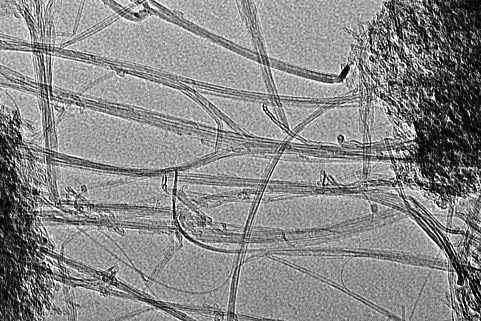Assessment of the Aerosol Generation and Toxicity of Carbon Nanotubes
Abstract
:1. Introduction
2. Methods
2.1. Aerosol Generator


2.2. Generator Characterization Trials
3. Toxicity Study Methods
3.1. Animals
3.2. Bronchoalveolar Lavage Fluid
3.3. Histopathology of Lung Tissues
3.4. Statistical Analyses
4. Results and Discussion
4.1. Initial Generator Performance Characteristics
4.2. Generator Transient Characteristics

4.3. Generator Steady State Characteristics
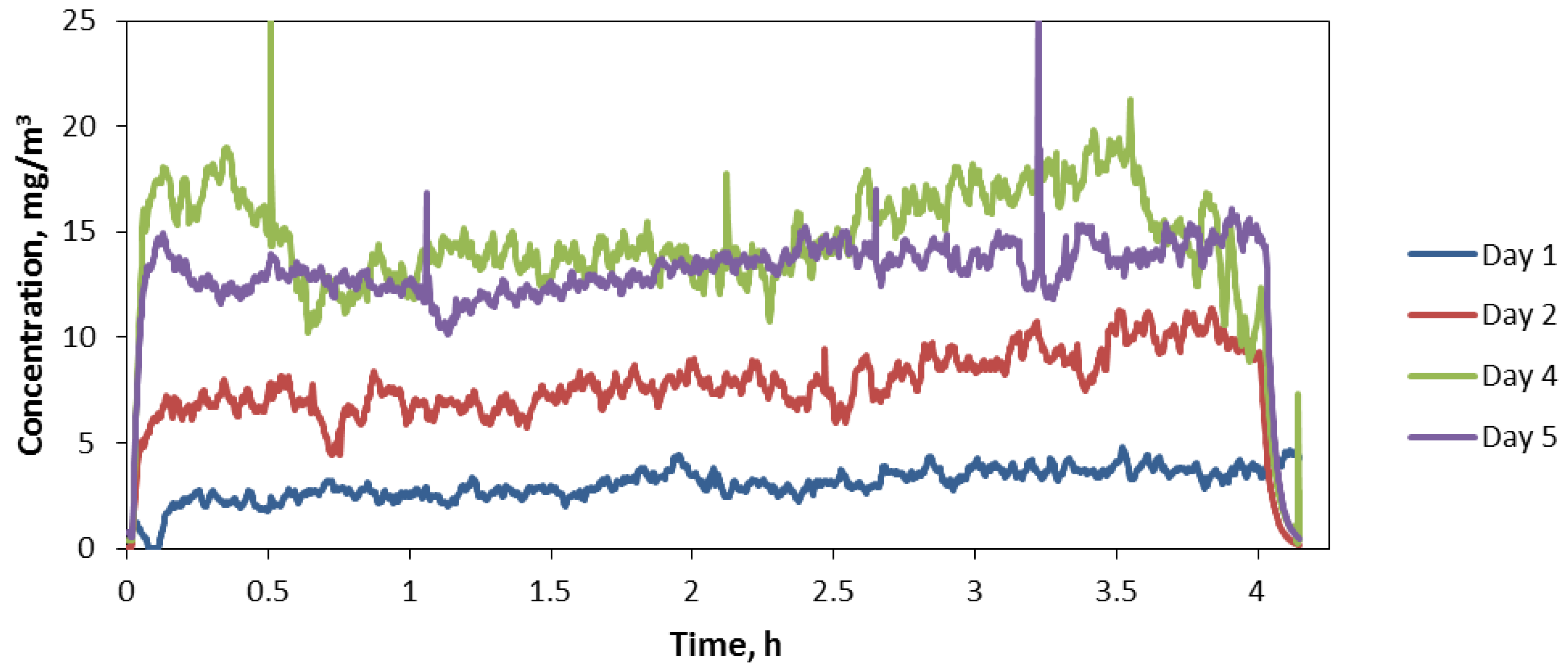
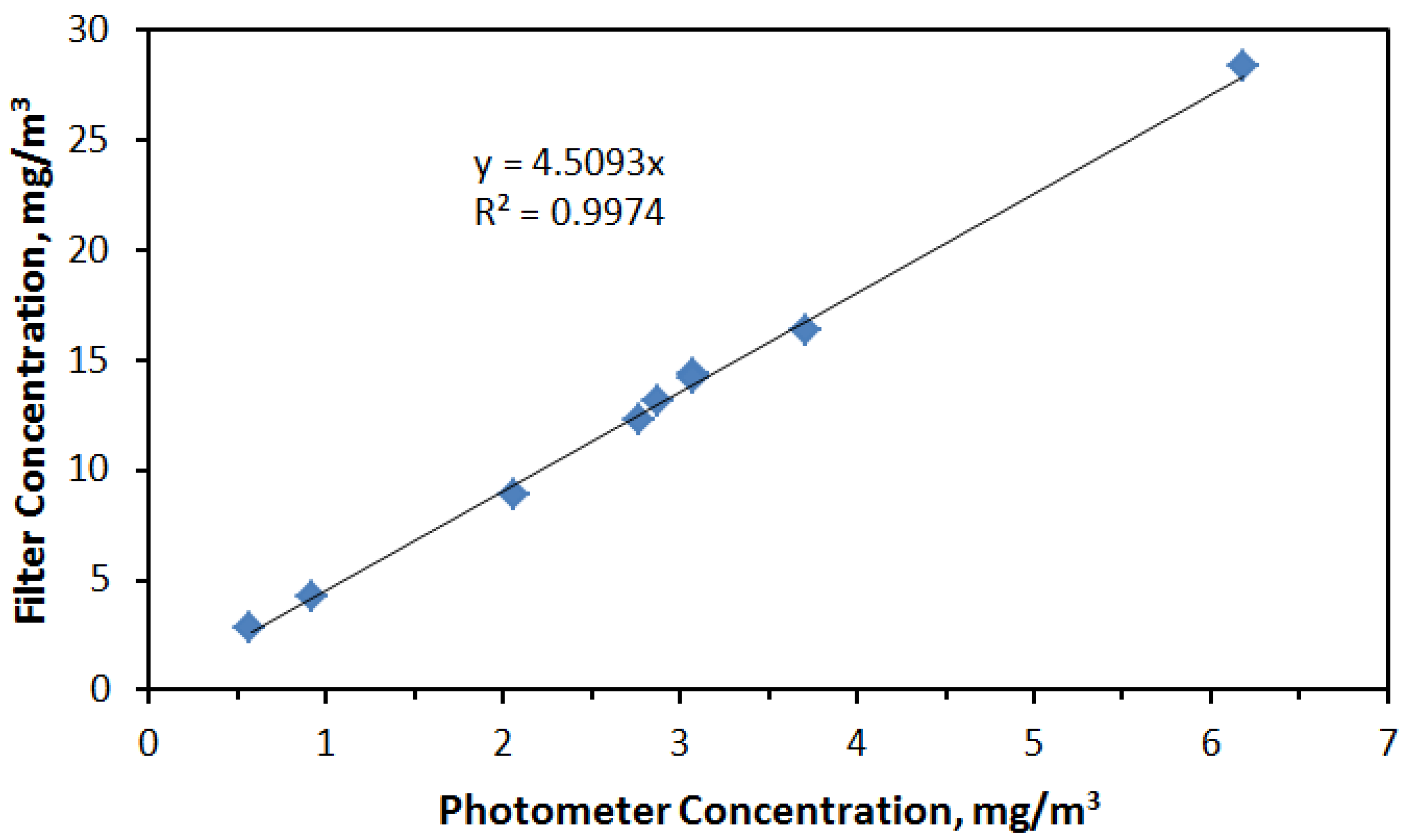
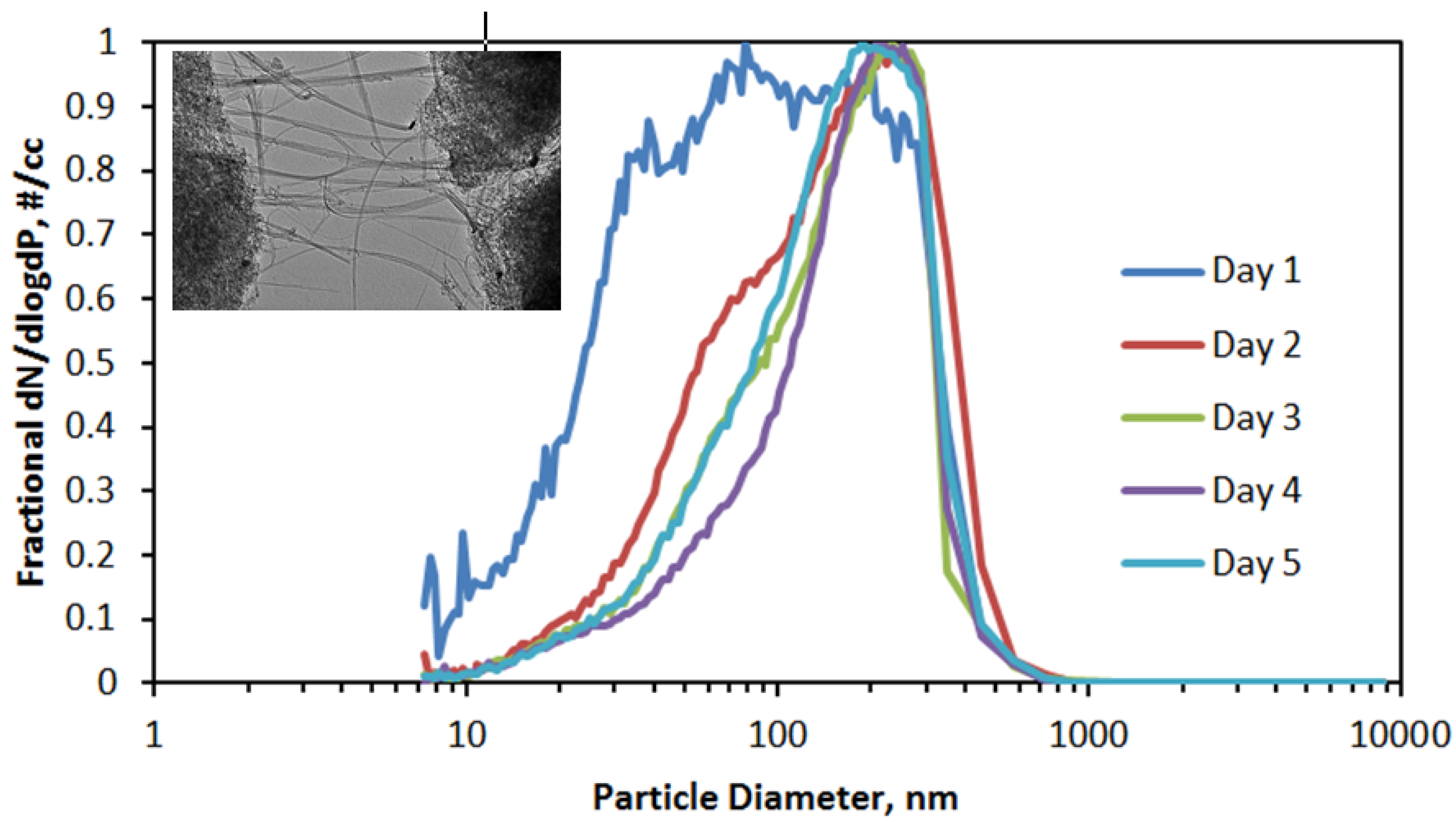
4.4. DWCNT Toxicity Study
4.4.1. Deposited Dose
4.4.2. BAL Cells
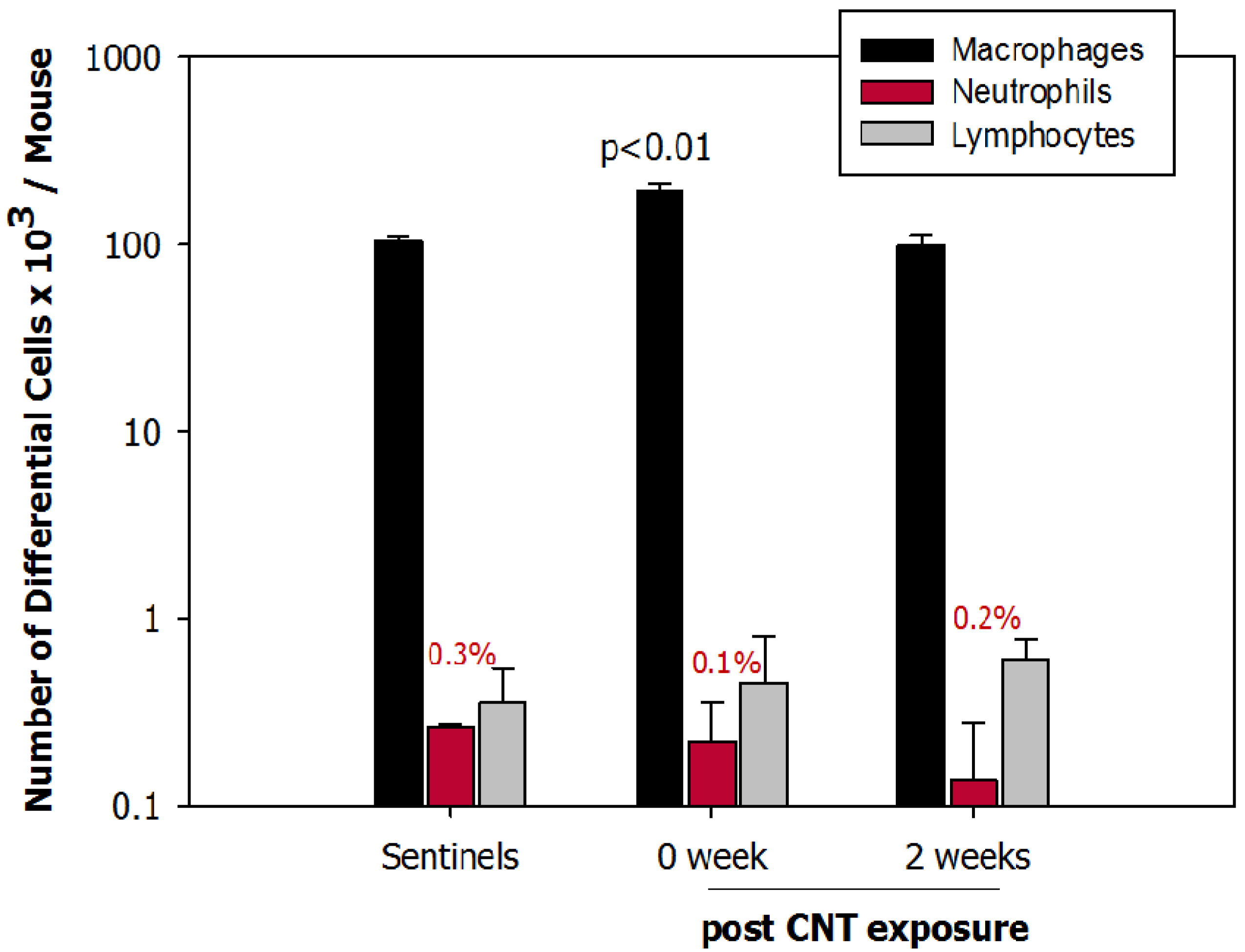
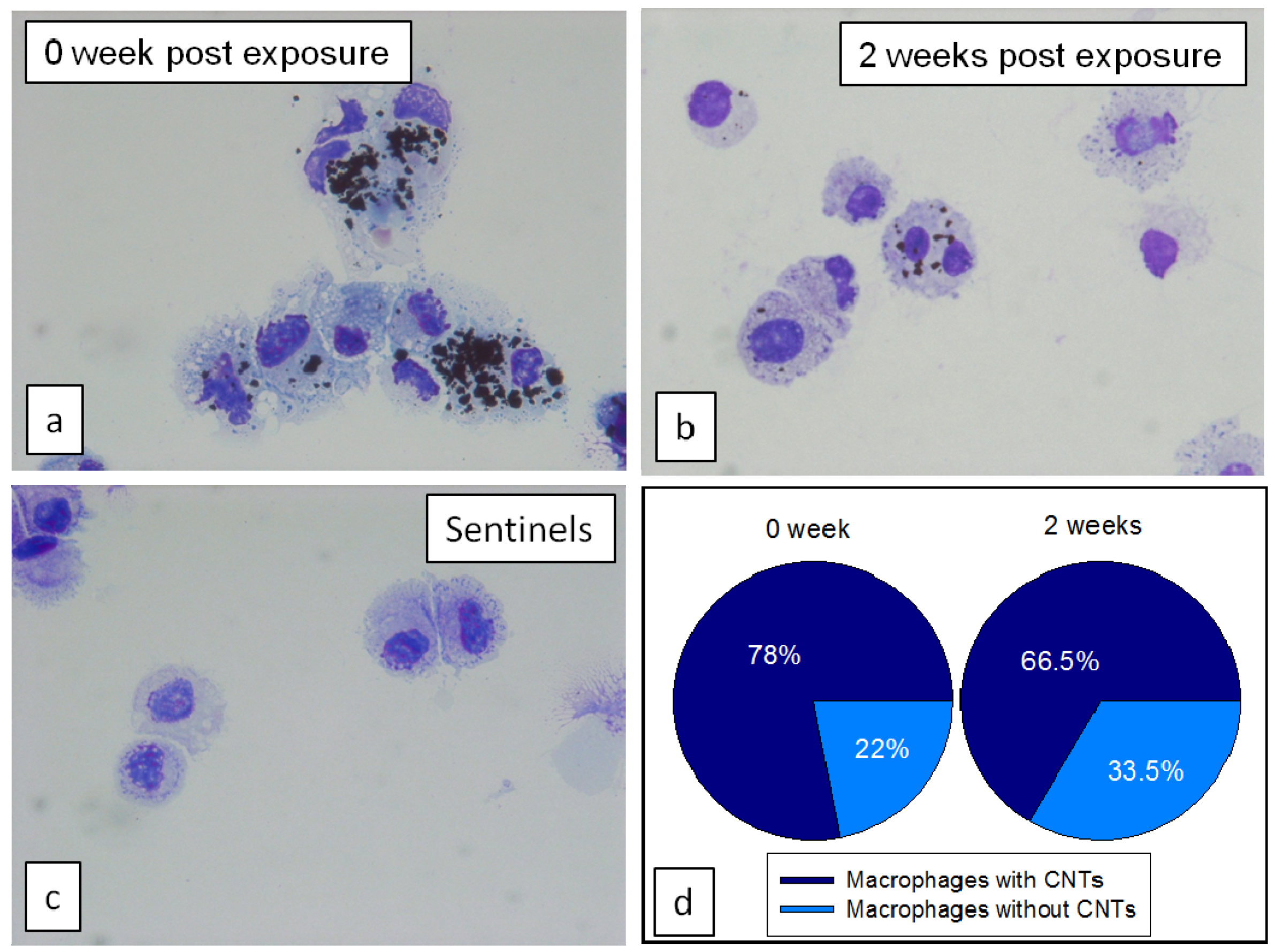
4.4.3. Lung Histopathology
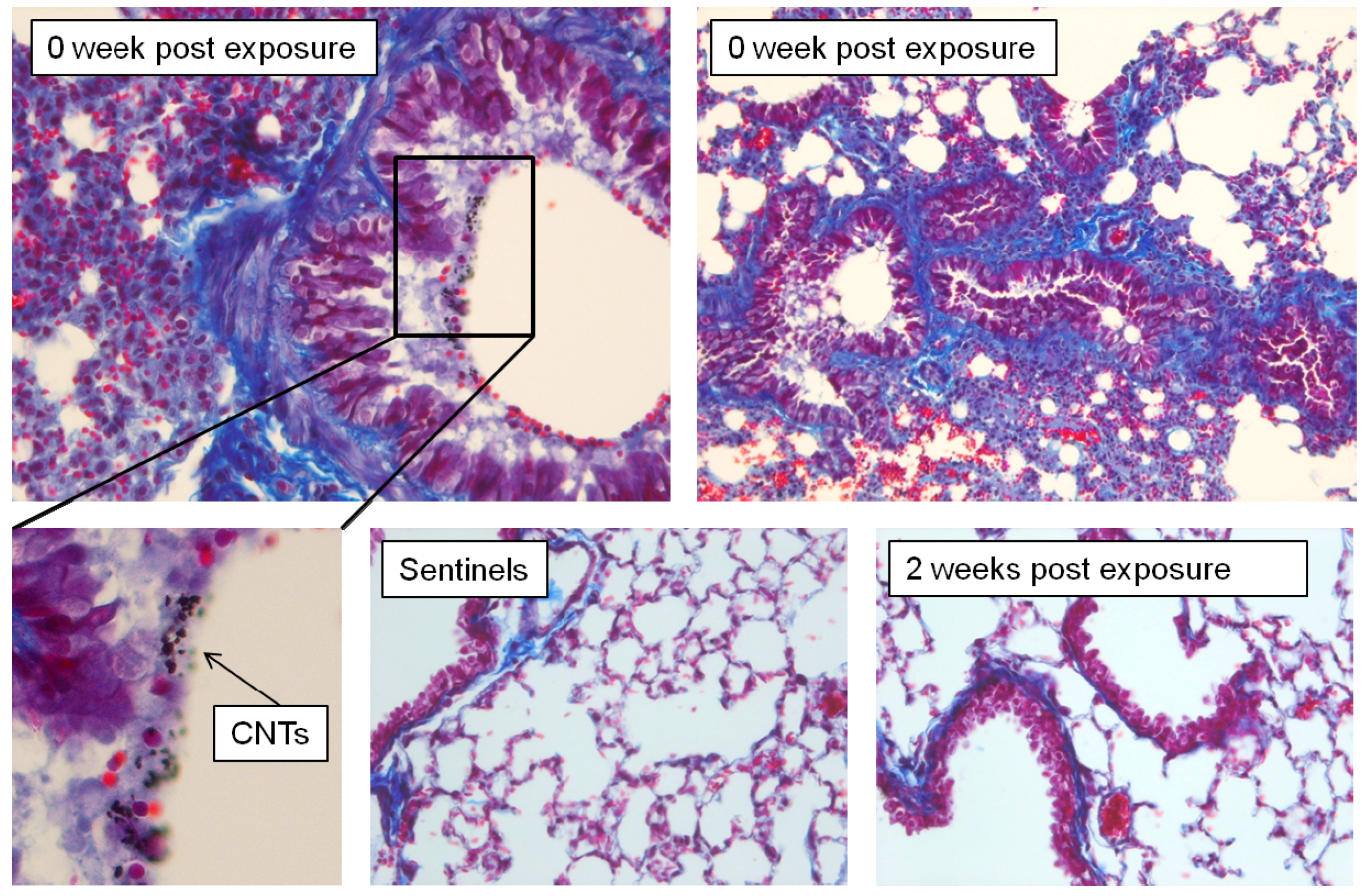
5. Conclusions
Acknowledgments
Author Contributions
Conflict of Interest
References
- Schmoll, L.H.; Elzey, S.; Grassian, V.H.; O’Shaughnessy, P.T. Nanoparticle aerosol generation methods from bulk powders for inhalation exposure studies. Nanotoxicology 2009, 3, 265–275. [Google Scholar] [CrossRef]
- Grassian, V.H.; O’Shaughnessy, P.T.; Adamcakova-Dodd, A.; Pettibone, J.M.; Thorne, P.S. Inhalation exposure study of titanium dioxide nanoparticles with a primary particle size of 2 to 5 nm. Environ. Health Perspect. 2007, 115, 397–402. [Google Scholar] [CrossRef]
- Grassian, V.H.; Adamcakova-Dodd, A.; Pettibone, J.M.; O'Shaughnessy, P.T.; Thorne, P.S. Inflammatory response of mice to manufactured titanium dioxide nanoparticles: Comparison of size effects through different exposure routes. Nanotoxicology 2007, 1, 211–226. [Google Scholar] [CrossRef]
- Pettibone, J.M.; Adamcakova-Dodd, A.; Thorne, P.S.; O’Shaughnessy, P.T.; Weydert, J.A.; Grassian, V.H. Inflammatory response of mice following inhalation exposure to iron and copper nanoparticles. Nanotoxicology 2008, 2, 189–204. [Google Scholar] [CrossRef]
- Stebounova, L.V.; Adamcakova-Dodd, A.; Kim, J.S.; Park, H.; O’Shaughnessy, P.T.; Grassian, V.H.; Thorne, P.S. Nanosilver induces minimal lung toxicity or inflammation in a subacute murine inhalation model. Part. Fibre Toxicol. 2011, 8, 5. [Google Scholar] [CrossRef]
- Blackford, D.B.; Kerrick, T.A.; Schumann, G. The measurement of nonvolatile residue in high-purity water and clean liquids. Ultrapure Water 1994, 11, 57–63. [Google Scholar]
- LaFranchi, B.W.; Knight, M.; Petrucci, G.A. Leaching as a source of residual particles from nebulization of deionized water. J. Aerosol. Sci. 2003, 34, 1589–1594. [Google Scholar] [CrossRef]
- Niida, T.; Kousaka, Y.; Oda, S. Aerosol generation method for measuring particles suspended in water-detection of particulate impurities in ultrapure water and sizing of fine powders. Part. Part. Syst. Charact. 1988, 5, 139–143. [Google Scholar] [CrossRef]
- Adamcakova-Dodd, A.; Stebounova, L.V.; O’Shaughnessy, P.T.; Kim, J.S.; Grassian, V.H.; Thorne, P.S. Murine pulmonary responses after sub-chronic exposure to aluminum oxide-based nanowhiskers. Part Fibre Toxicol. 2012, 9, 22. [Google Scholar] [CrossRef]
- Baron, P.A.; Deye, G.J.; Chen, B.T.; Schwegler-Berry, D.E.; Shvedova, A.A.; Castranova, V. Aerosolization of single-walled carbon nanotubes for an inhalation study. Inhal. Toxicol. 2008, 20, 751–760. [Google Scholar] [CrossRef]
- McKinney, W.; Chen, B.; Frazer, D. Computer controlled multi-walled carbon nanotube inhalation exposure system. Inhal. Toxicol. 2009, 21, 1053–1061. [Google Scholar] [CrossRef]
- Madl, A.K.; Teague, S.V.; Qu, Y.; Masiel, D.; Evans, J.E.; Guo, T.; Pinkerton, K.E. Aerosolization System for experimental inhalation studies of carbon-based nanomaterials. Aerosol Sci. Technol. 2012, 46, 94–107. [Google Scholar] [CrossRef]
- Mitchell, L.A.; Gao, J.; Wal, R.V.; Gigliotti, A.; Burchiel, S.W.; McDonald, J.D. Pulmonary and systemic immune response to inhaled multiwalled carbon nanotubes. Toxicol. Sci. 2007, 100, 203–214. [Google Scholar] [CrossRef]
- O'Shaughnessy, P.T.; Achutan, C.; O’Neill, M.E.; Thorne, P.S. A small whole-body exposure chamber for laboratory use. Inhal. Toxicol. 2003, 15, 251–263. [Google Scholar] [CrossRef]
- Hinds, W.C. Aerosol Technology, Properties, Behavior, and Measurement of Airborne Particles, 2nd ed.; John Wiley & Sons, Inc.: New York, NY, USA, 1999; pp. 97–100. [Google Scholar]
- O’Shaughnessy, P.T.; Haugh, L.D. An EWMA-based bounded adjustment scheme with adaptive noise variance estimation. J. Qual. Technol. 2002, 34, 327–338. [Google Scholar]
- Anjilvel, S.; Asgharian, B. A multiple-path model of particle deposition in the rat lung. Fundam. Appl. Toxicol. 1995, 28, 41–50. [Google Scholar] [CrossRef]
- Sager, T.M.; Wolfarth, M.W.; Battelli, L.A.; Leonard, S.S.; Andrew, M.; Steinbach, T.; Endo, M.; Tsuruoka, S.; Porter, D.W.; Castranova, V. Investigation of the pulmonary bioactivity of double-walled carbon nanotubes. J. Toxicol. Environ. Health A 2013, 76, 922–936. [Google Scholar] [CrossRef]
- Tian, F.; Habel, N.C.; Yin, R.; Hirn, S.; Banerjee, A.; Ercal, N.; Takenaka, S.; Estrada, G.; Kostarelos, K.; Kreyling, W.; Stoeger, T. Pulmonary DWCNT exposure causes sustained local and low-level systemic inflammatory changes in mice. Eur. J. Pharm. Biopharm. 2013, 84, 412–420. [Google Scholar] [CrossRef]
- Shvedova, A.A.; Kisin, E.R.; Mercer, R.; Murray, A.R.; Johnson, V.J.; Potapovich, A.I.; Tyurina, Y.Y.; Gorelik, O.; Arepalli, S.; Schwegler-Berry, D.; et al. Unusual inflammatory and fibrogenic pulmonary responses to single-walled carbon nanotubes in mice. Am. J. Physiol. Lung Cell. Mol. Physiol. 2005, 289, L698–L708. [Google Scholar] [CrossRef]
- Li, J.G.; Li, W.X.; Xu, J.Y.; Cai, X.Q.; Liu, R.L.; Li, Y.J.; Zhao, Q.F.; Li, Q.N. Comparative study of pathological lesions induced by multiwalled carbon nanotubes in lungs of mice by intratracheal instillation and inhalation. Environ. Toxicol. 2007, 22, 415–421. [Google Scholar] [CrossRef]
© 2014 by the authors; licensee MDPI, Basel, Switzerland. This article is an open access article distributed under the terms and conditions of the Creative Commons Attribution license (http://creativecommons.org/licenses/by/3.0/).
Share and Cite
O'Shaughnessy, P.T.; Adamcakova-Dodd, A.; Altmaier, R.; Thorne, P.S. Assessment of the Aerosol Generation and Toxicity of Carbon Nanotubes. Nanomaterials 2014, 4, 439-453. https://doi.org/10.3390/nano4020439
O'Shaughnessy PT, Adamcakova-Dodd A, Altmaier R, Thorne PS. Assessment of the Aerosol Generation and Toxicity of Carbon Nanotubes. Nanomaterials. 2014; 4(2):439-453. https://doi.org/10.3390/nano4020439
Chicago/Turabian StyleO'Shaughnessy, Patrick T., Andrea Adamcakova-Dodd, Ralph Altmaier, and Peter S. Thorne. 2014. "Assessment of the Aerosol Generation and Toxicity of Carbon Nanotubes" Nanomaterials 4, no. 2: 439-453. https://doi.org/10.3390/nano4020439
APA StyleO'Shaughnessy, P. T., Adamcakova-Dodd, A., Altmaier, R., & Thorne, P. S. (2014). Assessment of the Aerosol Generation and Toxicity of Carbon Nanotubes. Nanomaterials, 4(2), 439-453. https://doi.org/10.3390/nano4020439



